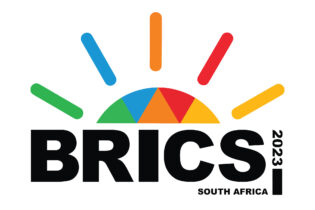Wenn du mich siehst, dann weine(if you see me, then weep) – is the message that was carved into stones that were embedded into a river during droughts between the 16th and 19th centuries in Germany and in ethnic German settlements throughout Europe.

Fortunately, the hunger stones’ warnings are not quite the same today – we can feed the world, and we can manage water better.
There is still a lack of urgency around addressing water issues. There are clear signs that investors and markets agree. Perhaps the most telling example is the performance of the S&P Global Water Index. This index tracks water-sector companies (water utilities, infrastructure, equipment and materials) from around the world. Since 2001, it has outperformed the S&P Global Broad Market Index by more than three percentage points annually; this year, that figure is already at 5%. Droughts and climate stress are not the only catalysts for water’s rising value. If anything, we grossly undervalue this resource. Only 3% of the world’s water is fresh – and more than two-thirds of that sits in glaciers. Supply struggles to keep up with demand as the world modernises. It’s simple economics: high demand and low supply mean water is becoming more precious. Though society’s treatment of water has not been commendable, we still have many chances to improve the situation. Interventions include:- Proactive maintenance: It is far more cost-effective to capture and remediate water infrastructure problems early than make repairs or replacements later. Technologies such as acoustic leak detection and predictive maintenance systems can radically reduce the cost and increase the longevity of water pipelines.
- Repairing infrastructure: Most African countries struggle with large levels of non-revenue water wastage. Fixing this would save water and bring revenue to ailing municipalities.
- Decentralised water reuse: Industries can capture and recycle runoff water for site activities, and use technologies such as UV and ozone to create safe potable water for their sites and surrounding communities. Residential areas can use greywater recycling to irrigate gardens.
- Improved irrigation: Agriculture takes the majority of available water in Africa, much of it groundwater, yet most is lost through evaporation. Investing in newer techniques such as drip irrigation will lead to huge savings.
- Water education: Educate people on how to use water more smartly.
- Water technologies: The water industry has developed incredible new technologies to help monitor, manage and improve water systems. From capturing water data for planning to retrofitting water and wastewater facilities with power- and cost-saving systems.







